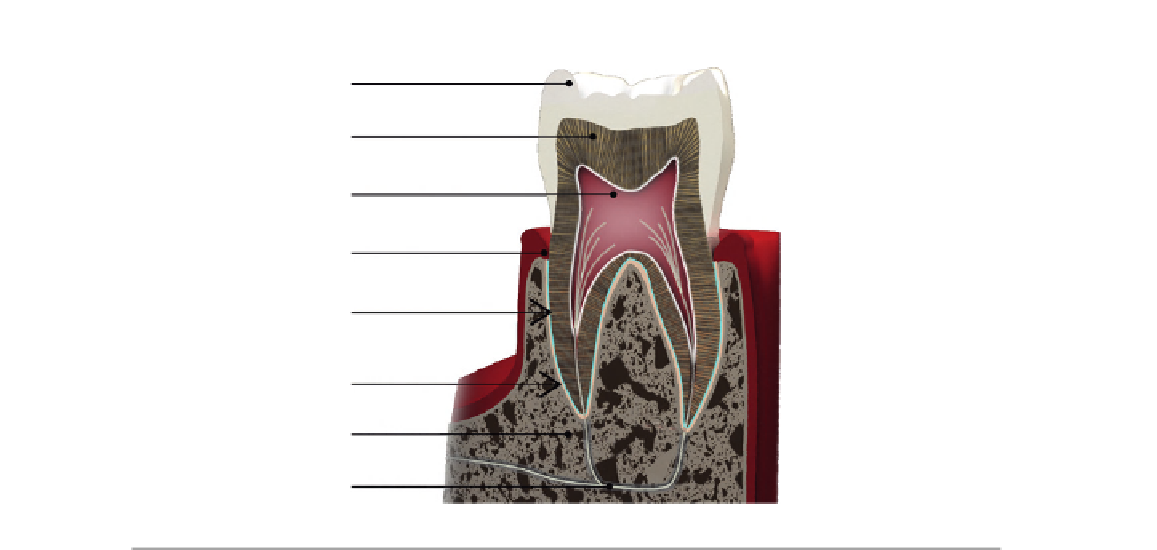Biomedical Engineering Reference
In-Depth Information
Enamel
Dentin
Dental pulp
Gum
Cementum
Periodontal
ligament
Aveolar
bone
Vasculo-
nervous
FIGURE 15.6
Structures forming part of the organ dental and periodontal tissue.
application as middle ear prostheses and as bone implants for alveolar ridge maintenance after
extraction—and in particulate form, for the treatment of periodontal bone defects
[63,64]
.
Based on these studies, bioactive glasses have been widely applied in dentistry for the treatment
of periodontal defects, probably due to its properties of bone formation by osteoconduction and
osteoinduction. The clinical use of bioactive glass in the particulate form of the brand Perioglass
s
has shown, over the years, positive results, with a good adaptation to the bone defects and maintain-
ing a good clot. Several studies and clinical reports indicate the glass as a material of easy handling
with excellent bioactivity and biocompatibility. Histological studies show that the use of bioactive
glasses can induce formation of new cementum and the formation of a new insertion
[63]
.
Schepers et al. (1991) also showed that bioactive glass particles have the property of stimulating
the formation of bone tissue in the treatment of bone lesions created surgically in the jaws of
dogs
[65]
. In a histological study conducted in the tibia of rabbits, MacNeill et al. (1999) confirmed
the study of Schepers et al. (1991)
[66]
.
Studies in humans evaluated the use of bioactive glass compared with the scrape surgery in the
treatment of intrabony periodontal defects. Results demonstrated significant clinical improvements,
such as an increase in radiographic density and a decrease in probing depth
[62]
.
Some clinical studies have shown beneficial effects of using platelet-rich plasma (PRP) associ-
ated with bioactive glass in periodontal therapy. Periodontal regeneration involves a complex series
of events, and the recruitment of progenitor cells to the injured site and growth factors are vital
during this process. These factors are responsible for the migration, proliferation, and differentia-
tion of periodontal progenitor cells. PRP is derived from a platelet concentrate that contains high
concentrations of growth factors. Some studies have encouraged the association between the use of
PRP with bioactive glass for periodontal regeneration
[67]
.

